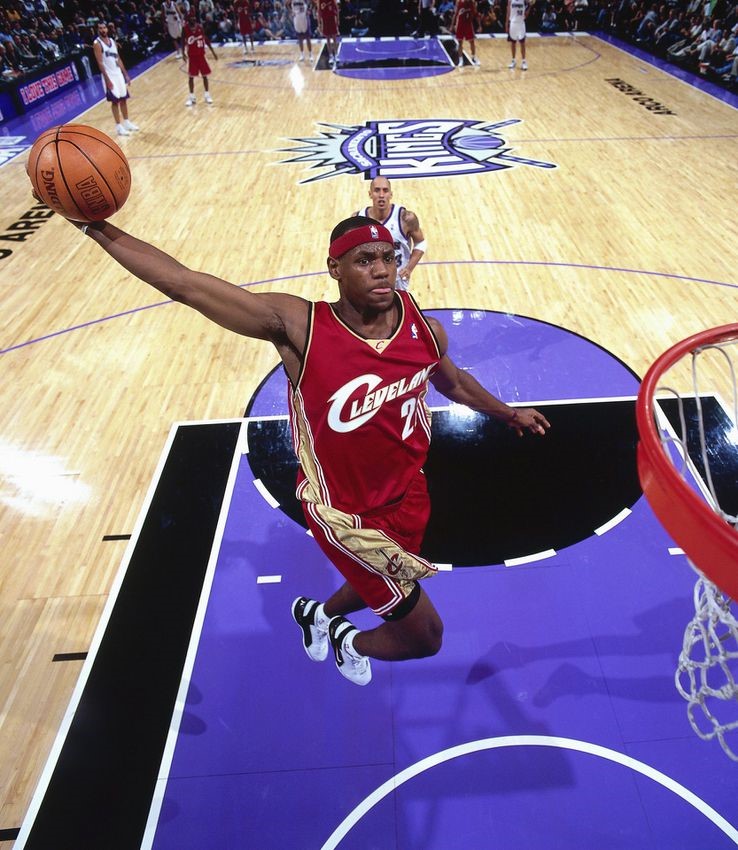Home »
Misc »
How to jump higher and dunk a basketball
How to jump higher and dunk a basketball
How To Jump Higher To Dunk A Basketball
So you want to dunk a basketball… For some people it seems to come so easily. There always seems to be that guy shorter than you who can just get up and throw down. Meanwhile you’re 6’2″ and can barely touch the rim…
In this article I’m going to share some tips to help you not only jump higher but understand the mechanics of being physically able to dunk a basketball.
In order to jump higher to dunk a basketball, you’ll likely need to increase your overall lower body strength significantly, while simultaneously increasing your rate of force development (explosiveness).
Depending on where you’re at, this may be a relatively short process. But for others, it may well be a lifelong quest. However if you follow these principles, you will get there as quickly as possible whatever your current predisposition.
Set Realistic Expectations
The first thing you need to understand about improving your vertical jump to eventually dunk a basketball is that it’s not going to be a quick process, in almost every case.![]()
Don’t expect to gain 14″ on your vert in three months. Don’t expect to be dunking by the summer if you can only just touch the backboard.
Hell even going from being able to grab the rim to dunking a basketball with any degree of consistency will take a while.
If you’re a young or short guy who’s not particularly athletically gifted and dreams of dunking, the good news is you can almost certainly get there if you train properly for long enough, but it may take you longer than you’d like.
Being able to dunk is a glorious, powerful feeling. It is well worth pursuing, regardless of where you’re at. If you’re just willing to commit to that pursuit, regardless of how long it takes, one day you will be glad you didn’t give up!
Smart Goal Setting
Have patience. Don’t put a time limit on your vertical jump training. If you say you want a 35″ vertical by March, you may end up overtraining in order to get there. You’ll likely get burnt out or give up completely when it’s February and you’re still not even close.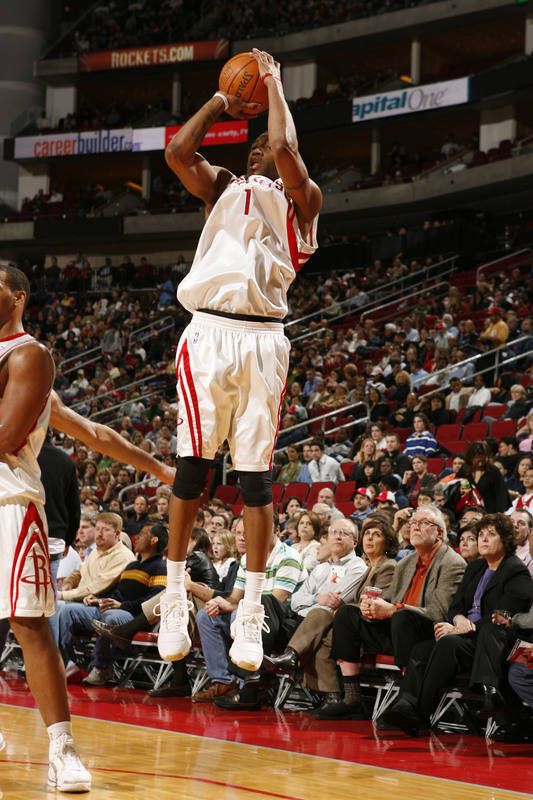
Instead, say that you’re going to work as hard and smart as possible on your vertical jump goal until March and then you can reevaluate and go from there.
Set more realistic, granular goals, like ‘add 5 lbs to each of my lifts this week’ and go tunnel vision on that one thing.
Master The Mechanics Of Jumping
Most people have horrific inefficiencies in their actual jump technique. If you were to film yourself jumping as high as possible, I’m sure I could give you several things to change which would immediately increase your vertical jump.
It all starts with the approach. You need consistent acceleration that is smooth and relaxed as you’re running into your jump.
You then really need to push into the penultimate stride and punch your block foot down as you finish the plant sequence, all while maintaining an upright torso and a neutral head and neck.
It’s way easier for you to see what perfect technique looks like if you can see annotated pictures and breakdown videos.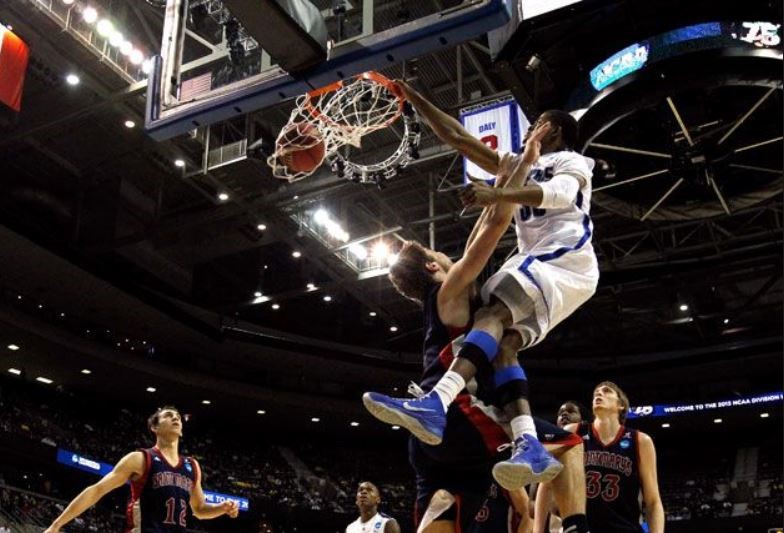 So check out my full article on the biomechanics of the two foot approach jump which has all of that!
So check out my full article on the biomechanics of the two foot approach jump which has all of that!
Get Really, Really Strong
For most young guys and really for anyone at any level, this should be your primary concern. You need to get strong.
For a while the idea of being able to squat 1.5x your bodyweight has been seen as the baseline measurement of acceptable strength. That means if you’re 60kg, your back squat 1RM needs to be at least 90kg.
And that’s just a starting point. Realistically we want you up closer to the 2x bodyweight mark.
So if you’re nowhere near this degree of strength, you need to get in the gym and start working on it. You don’t necessarily have to do squats, but they will likely be the best way to develop your lower body, assuming you’re able to learn correct form.
Do Speed Strength Work
Speed strength exercises are your typical ‘power’ movements such as the olympic lifts, jump squats, and med ball tosses.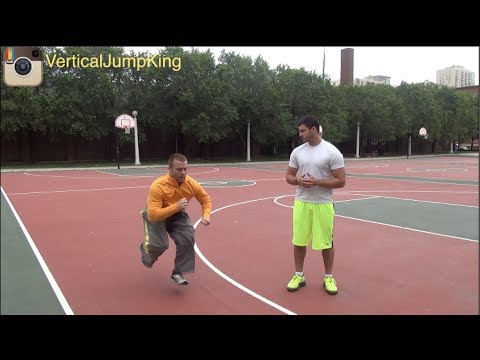 Really they’re anything that involves moving a load as quickly as possible.
Really they’re anything that involves moving a load as quickly as possible.
Image Source
The reason this is so effective in jump training is because these power exercises condition our central nervous system to more efficiently engage the muscles when the load is removed.
An example would be doing squat jumps using a barbell or weight vest. This is a very similar movement to the vertical jump, only heavier. This training principle is known as post-activation potentiation.
Speed strength exercises are typically training the ‘rate of force development’ component of the vertical jump.
As you know, you need to 1. get strong (see above) and 2. convert that raw strength into the sport specific movement of the vertical jump (RFD).
My most recent article explains in detail how to implement this kind of training into your routine so if you’re interested, take a look at how to jump higher with post-activation potentiation.
You’ll Have To Get Higher Than The Rim
For many of you looking to dunk a basketball, you’re going to be pretty pleased when you can grab the rim comfortably. Unfortunately, you’ve got to get a lot higher than the rim to actually dunk a basketball. It took me probably three years to go from gramming the rim to dunking a ball!
Unfortunately, you’ve got to get a lot higher than the rim to actually dunk a basketball. It took me probably three years to go from gramming the rim to dunking a ball!
How Many Inches Above The Rim To Dunk?
This will depend on how well you’re able to palm the ball but you’re probably going to need to be able to touch at least 10’6″ (so half a foot above the hoop) in order to actually dunk a regulation basketball.
If you have small hands you might need closer to 10″ of clearance til you’re actually able to do something more than a baby dunk.
Once you’re getting close to that point, start attempting to dunk with a tennis ball, then move up to a baseball, and then go for a size six basketball and work your way up as you start making some dunks.
Practice Palming The Ball
Believe it or not, this is something you can improve, to an extent. If you’re serious about learning to dunk, you should be practicing palming regularly. There’s plenty of great videos online you can look at for various exercises that’ll strengthen your fingers and palms and over time you should be able to palm a ball well enough to nail your first dunk, even without massive hands.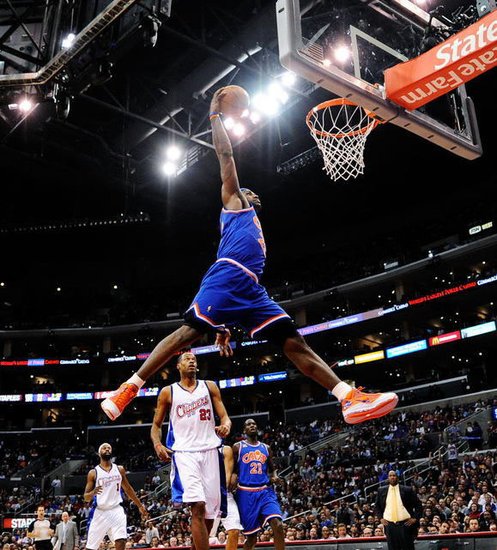
If you have really small hands, unfortunately you’re probably just going to have to become a much higher jumper and your focus will then be on the ‘crush grip’ dunk (where you hold the ball between your palm and forearm).
To dunk a ball this way requires a lot more vertical but chances are if you’re able to get up this high, you’ll be more than high enough to dunk already with a slightly cocked grip. This is where you’re essentially throwing the ball/guiding it into the hoop because your palm/grip is so weak. It’s in your palm but you don’t really have a hold of it; you’re just relying on momentum to keep the ball attached to your hand.
To pull this off you probably only need to be 2-3 inches higher than the minimum for dunking while palming.
Practice Jumping Off The Lob
Jumping with a basketball is really hard.
If you’re a two foot jumper, holding a basketball completely neutralizes your arm swing which means you’re sacrificing about 20% of your vertical jump. It’s pretty hard to do jumping off one foot as well.
It’s pretty hard to do jumping off one foot as well.
By tossing yourself a lob, you can catch the ball in the air off the bounce, allowing you to get maximum height from your vertical jump without a ball weighing you down or stopping your arm swing.
It takes a ton of practice to get the timing right, but once you get the hang of it, eventually the moons will align where you’ll jump just high enough and catch the ball just right, leading to your first dunk.
Do This When You’re Close To Dunking…
This goes back to the talk of post-activation potentiation. There’s a specific kind of warm up you can do that’s scientifically proven to temporarily increase your performance in explosive movements like the vertical jump.
It involves completing a dynamic warm up and following it with a couple of sets of loaded jump-related exercises which causes a temporary increase in CNS excitability which in turn enables you to jump higher.
So if you have access to dumbbells, a barbell, or even a weight vest when you’re getting close to nailing that first dunk, give this a shot and it may get you over the edge.
Read more about how to warm up for vertical jump testing here.
Importance Of A Powerful Upper Body
There’s a big difference between being able to sometimes eke out a baby dunk, and actually being able to throwdown. Or being able to do a windmill.
Once you’re jumping high enough to dunk, you’ll realise dunking isn’t just about getting strong legs so you can jump higher. Being able to do eastbays and windmills takes a lot of upper body explosiveness, coordination, and strength.
For most of you reading this, you’ve probably got a way to go before even thinking about doing a windmill, but it’s definitely a good idea to keep your upper body in check.
When you do hit upper body in the gym, remember to include plenty of med ball tosses, med ball slams, and basically anything that’s going to improve your arm swing and ability to manipulate the ball in the air.
Do All The Little Things Right
If you’re aspiring to dunk a basketball, it can be a painstakingly long process if you’re making it tougher than it needs to be. I was doing this growing up without even knowing it.
I was doing this growing up without even knowing it.
If you can do the following four things really well, your chances of dunking in a reasonable timeframe are going to be exceptionally high. If you neglect any one of these, you’re going to be making things way tougher than they need to be.
#1 Nail Your Diet & Sleep
This should be pretty obvious. But it amazes me how many young athletes are eating horrible diets and not getting anywhere near enough sleep.
You should have seen what I was eating in high school. On top of that I was sleeping 2-3 hours a night at some points throughout the year.
Now I’m a lot smarter and realise the importance of nutrition and sleep, especially when you’re working out everyday. You can’t expect to make the gains you want to see if you’re slacking on either of these things.
I’ll make it real simple. Do this.
- Sleep for 8 hours a night, no less.
- Eat clean.
- Eat a lot of protein.
 And then eat some more.
And then eat some more.
Clean, whole foods with tons of protein, and a good night’s sleep. This is half the battle when it comes to reaching your athletic potential.
I do have some sweet vertical jump specific diet tips you can check out here if you want to construct the ideal vertical jump diet.
#2 Avoid Injury & Overtraining
If you’re playing basketball three times a week, lifting four times a week, and doing plyometrics, you are massively overdoing it. It might not feel like you are, but you are 100% shooting yourself in the foot by doing this.
In order to see optimal vertical jump gains, you should really be doing no more than 11-12 hours of jump-related training a week, which includes basketball games, weight lifting, and jumping.
Fatigue masks progress. When you’re jumping a ton, your muscles and joints are going to be beat down. You’re not going to lift as much as you could and you’re not going to jump as high as you can.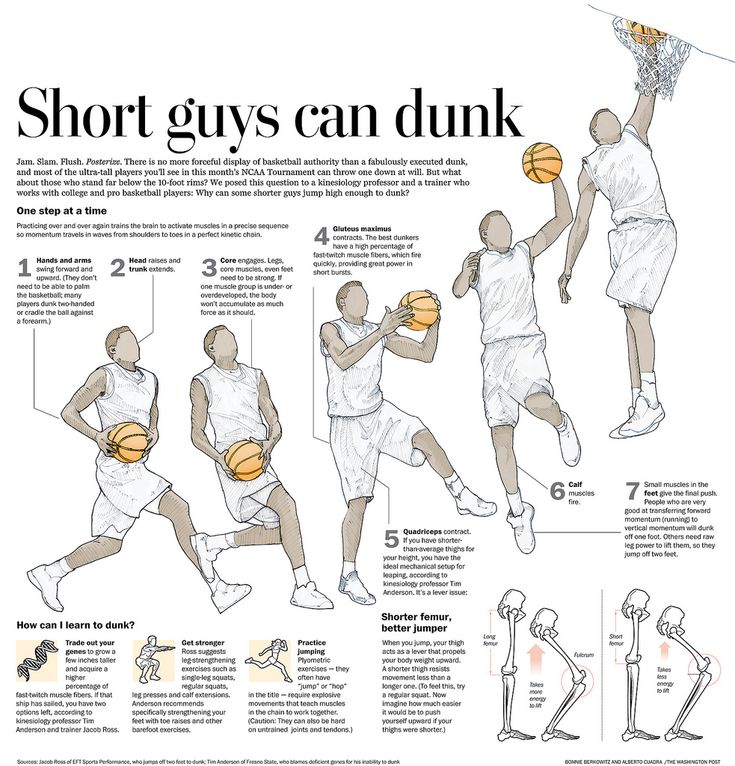
I wrote an article recently discussing six reasons why your vertical jump might have decreased. In that article I explain in detail how much fatigue is too much when it comes to vertical jump training and how overdoing it is really common.
This leads me to my next point…
#3 Take Deload Weeks
Take a deload week! If you’ve been busting your ass in the gym for the past six weeks, steadily improving your lifts, it’s time to take a deload week.
Drastically reduce your training volume to about 30% of what it was for about a week. Give your body a chance to fully recuperate. Wash away that layer of fatigue that has started to set in over the past couple weeks.
I know it sucks having to take a step back. You’re making great progress and just want to keep pushing it and working hard. But when it comes to improving your vertical, less is often more.
What I like to do during deload weeks is to just completely focus on stability and mobility. I do tons of ankle, feet, and shin stability work as well as do lots of isometric exercises, I foam roll every day, get plenty of massages, and make sure my hips and knees are in good shape so I can start hammering them again the following week.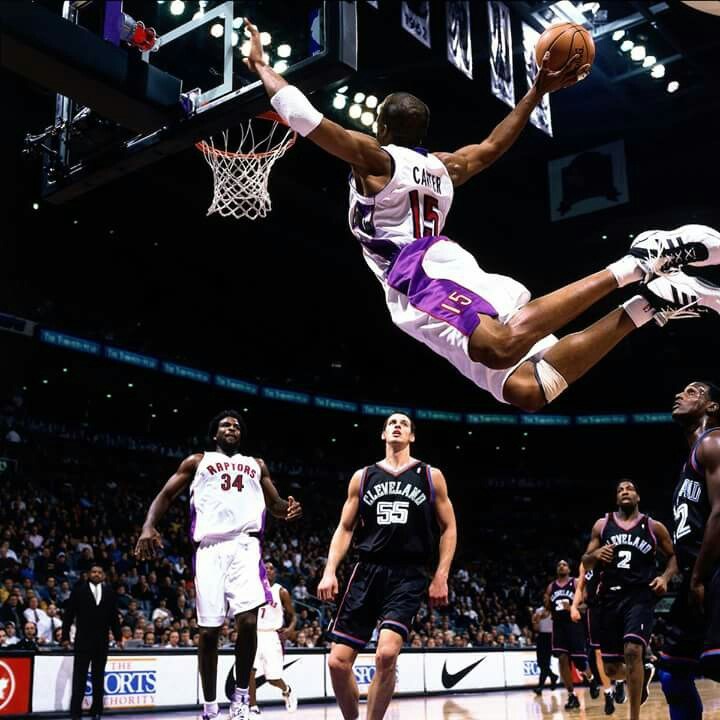
#4 Think You’re Strong? Get Stronger!
Unless you’re squatting 2x your bodyweight, you could be improving this aspect of your training.
Athletes belonging to which sport jump higher than the rest? Weightlifters. Why? Because they’re extremely strong. But also because they can utilize that strength explosively.
Weightlifters have insanely high raw strength. They can lift over 3x their bodyweight. But their rate of force development is crazy fast as well.
Channel your inner weightlifter.
Concluding Remarks
Dunking is one of the most incredible feelings I’ve ever experienced in my life. It’s a worthwhile pursuit for anyone who yearns for that feeling of power.
But it’s not easy to get there for most. Chances are you’ll have to put a ton of time and effort into getting stronger and more explosive to increase your vertical jump significantly.
After that, you’ll have to learn the mechanics of palming a ball and jumping with a ball. It’s not simple. But it’s well worth the sacrifice to get there.
It’s not simple. But it’s well worth the sacrifice to get there.
Make sure you’re training smart and taking extra good care of your body and your road to dunking a basketball will be shorter than you think!
How to Double Your Vertical Jump for Basketball
Photo courtesy of Dirk Hansen
A good vertical jump is a valuable asset for all of your players to possess. It will help your team get more rebounds, blocks, and steals. It will also let a few (or many) players on your team dunk the basketball, which can lead to increasing your teams confidence, enthusiasm, and can it make the game a lot more fun!
If you are wondering if it is even possible to increase your vertical jump, you’ll be happy to know that with proper training, it is definitely something that can be improved.
I’ve developed this program over a number of years and have seen great improvements in the leaping ability of those who have followed it. I call it the Coach Mac Vertical Jump Program.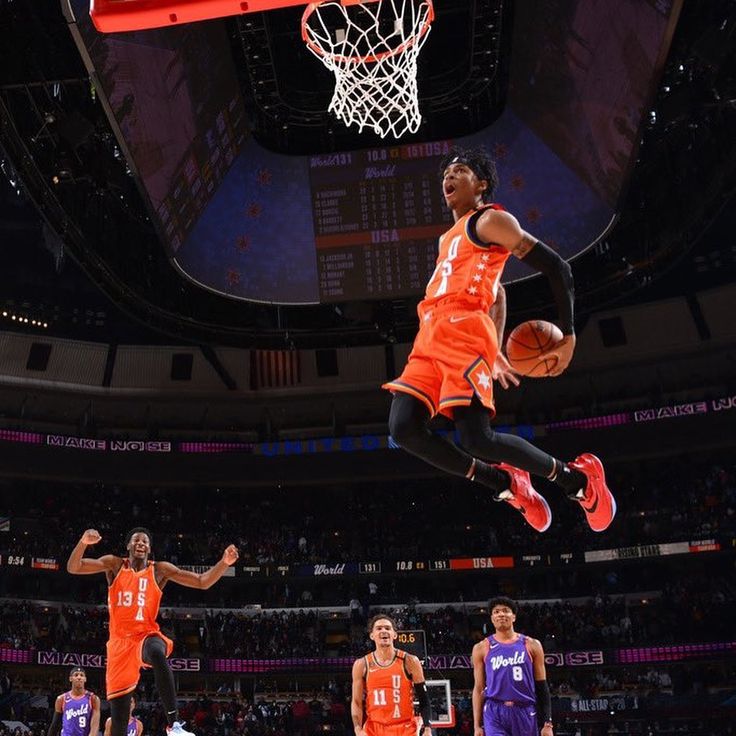 Not a very creative name, is it? 🙂
Not a very creative name, is it? 🙂
I designed this program to be completely equipment free and also without the need for a large space. This program can be completed by anyone as long as you have a 2 x 2 meters of free space. Which we all do. So there can be no excuses for not completing the program.
Disclaimer: Obviously, I am not a doctor. If you or your players feel any pain in any of your joints during the program stop immediately and consult a doctor. You don’t want to make any previous injuries any worse.
Update for 2021!Best Vertical Jump Program in the WorldI have found what I believe to be the current best vertical jump program in the world, and it’s Vert Shock by Adam Folker.
While there are a ton of success stories of players using my program and making massive gains (check the comments if you don’t believe me), I’m also realistic about the extent of my knowledge on vertical jump training.
Adam Folker is a former NCAA Division I basketball athlete and professional basketball player. He connected with Justin ‘Jus Fly’ Darlington who currently holds the title as the World’s #1 Highest Dunker to create the best vertical jump program ever.
He connected with Justin ‘Jus Fly’ Darlington who currently holds the title as the World’s #1 Highest Dunker to create the best vertical jump program ever.
If you’re interested, check out his program below. I highly recommend it.
Vert Shock by Adam Folker
If you’re not interested in it that’s fine! You’ll still make a ton of gains using my workout. And I’d love you to use it! I made a promise to myself that I’d share the best information and products I know about and I’m keeping that promise.
How to Measure Your Vertical JumpAs the saying goes, ‘You can’t improve what you can’t measure’.
The first step on your journey to increasing your vertical jump is to get a starting point of where your currently at so that you can track your progress.
Here’s how to do it;
Things you’ll need: Another friend to help you, a ladder, and either a permanent marker or chalk.
1. Find a wall or pole tall enough that when you jump you cannot touch the top.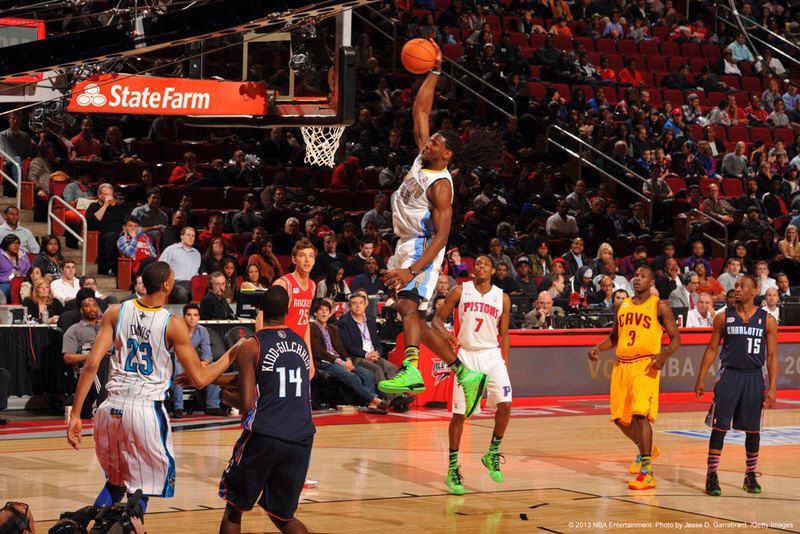
2. Stand next to the pole or wall and extend your arm as high as you can above your head. This is your standing reach. Have your friend mark your standing reach with either a piece of chalk or a permanent marker.
3. Now from a standing start, jump and touch as high up the wall or pole as you possibly can. You’ll need your friend to watch and see where you touch so that there’s no confusion. Get your friend to climb the ladder and mark where you were able to reach on the wall.
4. Measure the distance between your standing reach and your jumping reach. This is your current vertical jump.
Important Information on the Coach Mac Vertical Jump ProgramWarming UpBy reading my previous article on stretching, you’ll learn that it is important to warm-up your muscles first before stretching or performing any strenuous physical activity. I recommend jumping rope for a couple of minutes to warm-up and increase the blood flow to your muscles.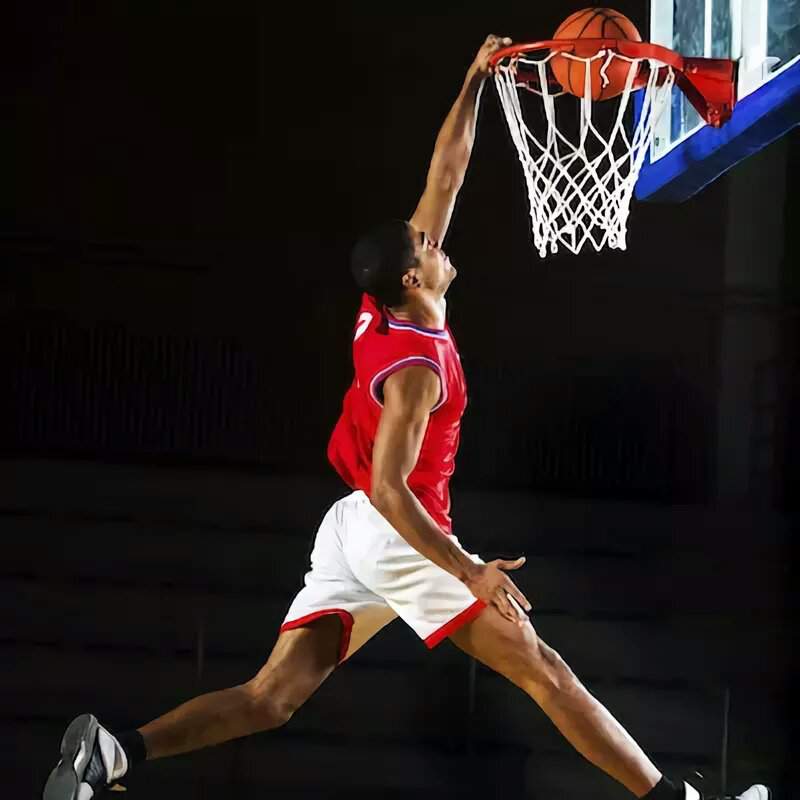
PhasesThe program is broken up into three different phases consisting of four weeks each. This is because as you continue through the program your muscles will adapt to the intensity of the workout, therefore we need to keep increasing the workload in order to continue increasing your vertical jump.
FrequencyPerform the routine every second day to give your body a days rest in-between workouts. This means that on week one you’ll be training 4 times a week, week two you’ll be training 3 times per week, and on week three you’ll be training 4 times per week. That ends up being 11 workouts per phase for a total of 33 workouts in the program. Also, during this program you will be taking one week off between each phase to let your body completely recover. You need to give your muscles time to fully repair in order to grow stronger and more explosive.
Rest IntervalsOne minute rest in-between all sets. If you can, try to keep a stop watch with you when you’re doing these workouts. If you don’t have one my players have found it convenient to use the stop watches located on their mobile phones.
If you can, try to keep a stop watch with you when you’re doing these workouts. If you don’t have one my players have found it convenient to use the stop watches located on their mobile phones.
Record Your ProgressKeep track of how much progress you’ve made at the end of each rest week. It’s going to be hard for your players, but stress that if they really want to see results it’s best that they wait until the end of the rest week. We know how hard it is for players to be patient!
Exercises:If you have any trouble understanding my descriptions of the exercises, YouTube them to watch a video of the exercise being performed.
Jumping Rope – A skipping rope is the only piece of equipment involved in the program. If you don’t have one a piece of rope will do just fine. If you don’t have a piece of rope either jumping up and down on the spot without much bending in the knees will achieve a similar result. Jumping rope involves holding a rope with both hands and swinging it around your body continuously.
4-Corners – Involves you imagining 4 dots in a square shape about 15 – 20 inches apart. To complete 4-corners you hop around the square in a clockwise direction landing on each dot for the required number of repetitions. 4 jumps and completing the square equals one repetition.
Single-Leg 4-Corners – Exactly the same as 4-Corners except performed on one leg.
Slow-Motion Squats – Involves standing with your feet shoulder width apart. From this position slowly lower down until you are in a deep squat making sure your heels are flat on the ground. Hold for 2 seconds before slowly rising back to the starting position. The descent and rise should each take 4 seconds to complete. Throughout the entire exercise make sure to keep your head up and your back straight.
Tuck Jumps – Tuck jumps involve descending into a comfortable squat and then jumping as high as possible and bringing your knees to your chest.
High-Reach Jumps – Are similar to tuck jumps, but instead of brining your knees to your chest, you just reach as high as you can. This is done best under a basketball ring or near a wall so that you can tell how much lower your reach becomes as you fatigue. Try to reach the same height through all repetitions. if you don’t have anything to measure against, that’s fine. Just jump as high as you can each repetition.
Lateral Jumps – Lateral jumps are performed best with over a line or a stick. They involve standing parallel to the line on one side and then quickly jumping sideways back-and-forth over the line. Over and back equals one repetition.
Single-Leg Lateral Jumps – Exactly the same as lateral jumps except performed on one leg.
Alternating Lunge Jumps – From a normal standing position, take one step forward with your right foot and one step backwards with your left foot. This is your starting position.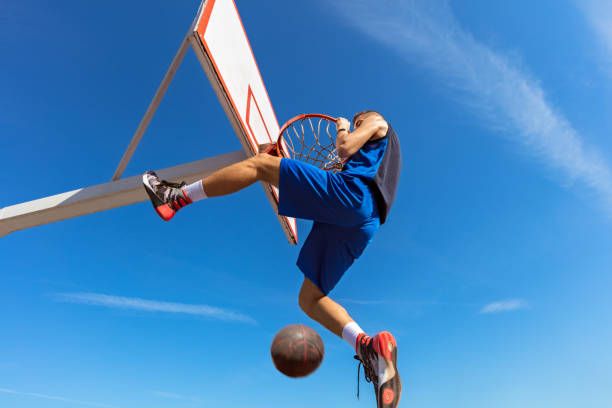 From this position, jump as high as you can in the air and switch leg positions.
From this position, jump as high as you can in the air and switch leg positions.
Straight Leg Calf Jumps – Without bending your knees, jump up and down in the same spot. You won’t get very high off the ground and it will be the ankle doing all the movement which will work the calf muscle.
Toe Raises – Stand regularly, then raise up onto the tips of your toes. Lower back down. Don’t rock up and down, do it slowly (not too slowly) but steadily. This is improved by using stairs if you have access to them. Alright, enough talk. Here’s the program you’ve all been waiting for.
Coach Mac Vertical Jump ProgramPhase 1 – Weeks 1 – 31. Jumping Rope – 2 minutes.
2. Stretching
3. Jumping Rope – 2 minutes.
4. Slow Motion Squats – 3 sets of 10 repetitions.
5. Lateral Jumps – 3 sets of 20 repetitions.
6. Alternating Jump Lunges – 3 sets of 10 repetitions.
7. Tuck Jumps – 3 sets of 8 repetitions.
8. Toe Raises – 3 sets of 20 repetitions.
Week 4 – Rest.
Phase 2 – Weeks 5 – 71. Jumping Rope – 2 minutes.
2. Stretching
3. Jumping Rope – 3 minutes.
4. Slow Motion Squats – 3 sets of 10 repetitions.
5. 4-Corners – 3 sets of 12 repetitions.
6. Single-Leg Lateral Jumps – 3 sets of 15 repetitions.
7. Alternating Jump Lunges – 3 sets of 15 repetitions.
8. High Reach Jumps – 3 sets of 8 repetitions.
9. Straight-Leg Calf Jumps – 3 sets of 30 repetitions.
Week 8 – Rest.
Phase 3 – Weeks 9 – 111. Jumping Rope – 2 minutes.
2. Stretching
3. Jumping Rope – 4 minutes.
4. Slow Motions Squats – 3 sets of 10 repetitions.
5. Single-Leg 4-Corners – 3 sets of 10 repetitions.
6. Single-Leg Lateral Jumps – 3 sets of 20 repetitions.
7. Alternating Jump Lunges – 3 sets of 20 repetitions.
8. Tuck Jumps – 3 sets of 8 repetitions.
9. Straight-Leg Calf Jumps – 3 sets of 40 repetitions.
Straight-Leg Calf Jumps – 3 sets of 40 repetitions.
Week 12 – Rest.
I have found what I believe to be the current best vertical jump program in the world, and it’s Vert Shock by Adam Folker and Justin ‘Jus Fly’ Darlington.
Important Update! – I have been receiving a few emails/comments on players tracking their jump during the course of their program. Please understand that what you are doing when completing a jump program is breaking down the muscle. You aren’t going to see improvements mid-week because the muscle hasn’t healed properly. That’s why I suggest only checking how much you’ve improved at the end of each rest week. Rest is just as important as the routine.
That’s it! It’s as simple as that.
I’ve seen players make massive gains using this exact program so don’t hesitate giving it to your players to help them improve.
They’ll love it too. Who doesn’t want to dunk a basketball?
Let me know how the program works for your players.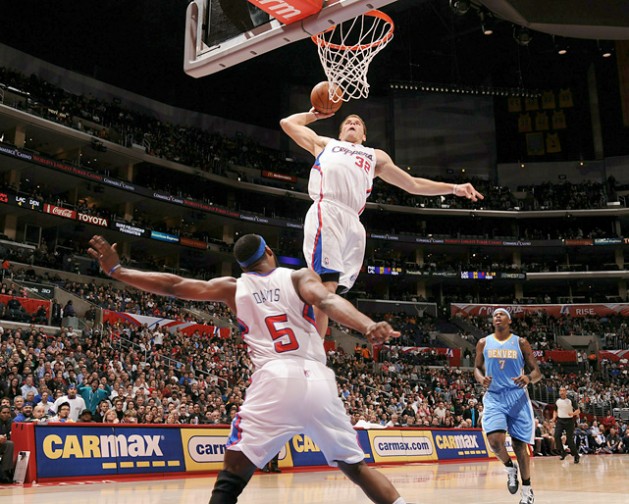 I’d love to hear some of the results.
I’d love to hear some of the results.
– Coach Mac
How to learn to jump high? - Sport Collection
Higher! Farther! Faster! - the motto of any athlete. Not a single victory is possible without this attitude, but today we will talk about “ABOVE!” About the dream of many athletes to have good jumping ability, because not everyone has this talent, but many people are interested in whether hard training can achieve high jumps. This goal can be faced by both amateur athletes and professional athletes who must master the high jump in order to achieve long-awaited victories.
The ability to jump high, while controlling its body, is required in such sports as:
- Basketball
- Ski sports
- Snowboarding
- Jumping -down
- shuttle jumps
9000 - parkour
- acrobatics
- choreography
- extreme sports
- figure skating
- volleyball
- gymnastics
- dancing
And this is not the whole list of sports where jumping ability is needed as an additional skill.
How to learn to jump high? High jump is a great physical activity, so the development of such a skill should be approached seriously and under the guidance of a person who understands how it is done. Proper strength training, systematic exercises and rational load distribution will help everyone master the technique, but it is important to understand that this will take time, which means perseverance and patience. The main thing is to know that the goal is achievable and competently move towards it.
The development of jumping from a vertical position develops coordination, strengthens muscles, which makes the athlete better control his body, his endurance grows. Any jumper knows how to land correctly from different heights, which is always useful not only in sports.
The jump mechanism consists of the following phases: - take-off
- preparation for the push from the ground
- repulsion
- flight
- landing
What muscles work when jumping? Physical fitness in general is the key to successful training, you can not work only with the muscles of the legs, for example, while having a flaccid shoulder girdle.
Calves
The calf muscles should be developed for a strong push from the surface, as well as to prevent various injuries.
Ankles, feet and ankles
They have a very serious load during the run-up and especially landing, so these fragile areas of the legs should be strengthened by gymnastics and be sure to warm them up before training. This will help avoid injury.
Knees
Considered to be one of the most fragile places during jumps, so you should not only learn how to land correctly and safely, but also strengthen your knees by doing special exercises.
Muscles of the thighs and buttocks
The development of these muscles will help you make a good run-up and a powerful push. The anterior thigh muscle helps to throw the body up, which means that a lot of attention is paid to its strengthening.
Experts advise starting such classes, preferably with an experienced trainer, but if you decide to do it yourself, then listen to our advice.
1) Safety Do not start training on a concrete floor or grass without elbow and knee shock absorbers. For jumping at the initial stage, mats or tatami are well suited to prevent injury during falls.
2) Complete warm-up Muscles and joints must be thoroughly warmed up and stretched to be ready for a big load.
3) Regularity of training Classes should be with a gradual load.
The best exercises for developing jumping ability There are many developed techniques for developing jumping ability, but many consider the box or platform jump to be one of the most effective exercises. This helps to jump high without a run-up and strengthens the muscles of the legs. I must say that the first time not everyone succeeds in jumping onto the box from a place, especially if it is high. The main thing is not to despair, but try to take a lower platform, master the jump, and then gradually increase the height. For those who are unable to push off from a place, you can start with a small take-off, which we gradually begin to reduce. After such a workout, be sure to give the muscles a rest and do not forget about stretching to relax the muscles.
For those who are unable to push off from a place, you can start with a small take-off, which we gradually begin to reduce. After such a workout, be sure to give the muscles a rest and do not forget about stretching to relax the muscles.
Landing is an important part of the jump, because it is at this stage that you can get injured if you do not follow the technique.
And it consists in landing on soft, bent at the knees legs, as if springing them, when jumping from a great height, you can squat down. Straight, tense legs, and the same body are unacceptable during landing. The torso is tilted at a 45° angle, the legs are bent at the knees, the toes are pulled down because the landing starts on the toes, then the heel drops. Hands should be put forward a little.
Training program Stage one - jumping rope.
250-300 jumps, non-stop and fast.
Such jumps develop breathing, strengthen all the necessary muscles and joints.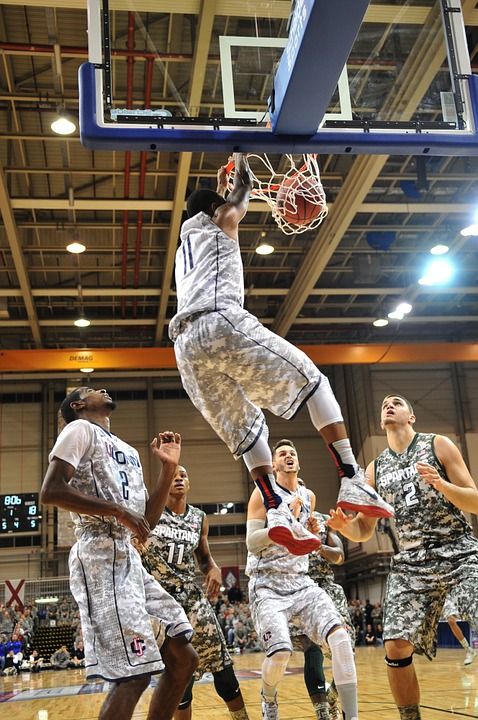
To increase the load over time, you can perform jumps with weight and with a lot of jumps.
Stage two - squats
These exercises are best done with weight, it can be a backpack with a load or a barbell on the shoulders. You need to perform 10-15 squats, 5-7 approaches with breaks of several minutes. This exercise perfectly develops all the leg muscles necessary for high jumps.
Step three - calf raises
Raise your toes as high as you can and gently lower your entire foot. You need to repeat from 20 to 50 times, until burning in the calves.
Fourth stage - jumping
You can perform this exercise in different ways - jumping onto a box or platform, or high jumps to any goal (basketball basket or a ball suspended from a tree) You can jump from different takeoffs - from 10 to 5 steps, pushing off with one and two feet.
How often do you practice? The optimal frequency of training is two or three times a week, the duration of the session is 1. 5-2 hours.
5-2 hours.
Do not practice every day, so that there is no great burden on the body. To begin with, all exercises should be performed at an average pace, within your own physical capabilities.
From session to session, the number of approaches and repetitions will increase, the observance of gradualness in any training leads to the expected result.
Equipment for training - knee pads, elbow pads
- weights - special belts and bags with sand for legs and arms, or a backpack with something heavy
- rope
- exercises for jumping or dumbbells 9008 stable box
Psychological aspect Sports psychologists explain to athletes how important the mental attitude is before any training in order to achieve their goals. It is important to clearly visualize in your imagination all the stages of the jump in detail: run, muscle tension, upward impulse, landing. The fact is that a vivid representation of physical activity in the imagination contributes to the work of the muscles of the body in reality, and greatly contributes to strengthening not only the will of the athlete, but also physical strength.
By approaching training wisely, exercising systematically and regularly, you can achieve excellent results in the development of jumping ability.
How to learn to jump high. Help
Publication date: 07/07/2016 10:00
The ability of an athlete to jump high gives him an advantage over his opponent in many team sports - and in basketball, to be the first to throw the ball into the ring; and in volleyball, in order to take off over the net to “pay off” the ball; and even in football, where you can score a goal with your head.
Jumping ability depends on strength, elasticity, and speed of muscle contraction. What will help develop all these qualities?
The simplest exercise in the jump training program is to jump up as high as possible, trying to reach some object / bar. Start with 10 jumps, gradually adding one per day, working up to 50 at a time. Do 3-4 sets throughout the day. In each new jump attempt, the athlete must try to show the best result. Therefore, adjust the number of jumps. You don't have to do them to the limit.
Therefore, adjust the number of jumps. You don't have to do them to the limit.
For more effective training, use the Jump Trainers. We offer shock absorber for legs "PER4M JUMP TRAINER" and shock absorber for jumping (belt) "SKLZ HOPZ 2.0"
The athlete puts on the belt and ankle cuffs. Latex cables connect them together. Making a vertical jump with a simulator, the athlete puts additional effort to overcome the resistance of the cables. How good is this trainer? Under load, the muscles work more efficiently, and this increases power and endurance. The kit comes with four interchangeable cables, so you can adjust the level of resistance depending on the level of fitness and tasks. From a semi-squat position, make vertical jumps as high as possible.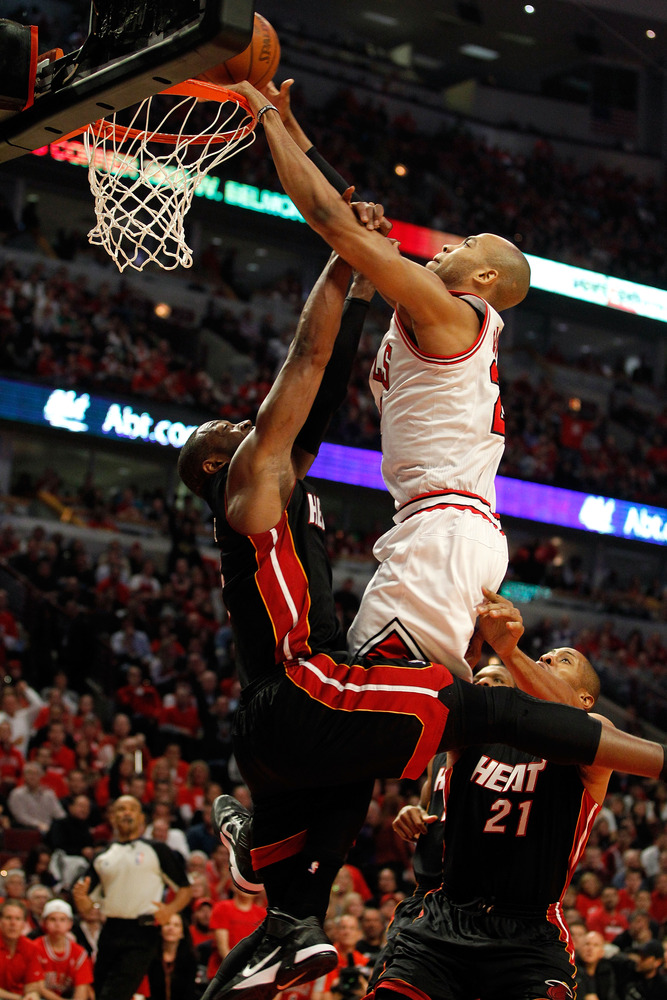 To make it harder, jump on one leg.
To make it harder, jump on one leg.
The jumping ability of is also increased by exercises for the length and height of the repulsion. Therefore, we recommend jumping on a hill, for which you can use plyometric boxes of different heights. Start at a comfortable height and gradually increase. You can also place boxes in the form of an obstacle and try to overcome them as quickly as possible in a jump.
Jump training should be varied. It is useful to run on toes - either raising your knees high, then throwing your heels back as high as possible. When performing these exercises, you can use 9 as weights.0043 weight vest , as well as medicine ball .
To increase jumping endurance - we recommend including rope exercises.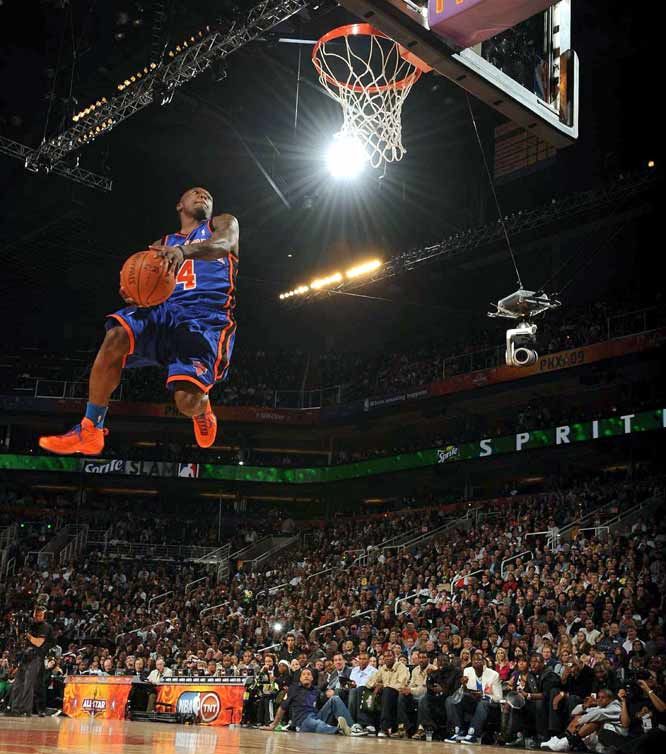
Jumping training should definitely include calf stretches, so be sure to add them to your program:
- Lean forward without lifting your heels off the floor. You can hold on to a support. The deeper you bend, the more the calf muscles are stretched.
- Another exercise: stand on your toes on the edge of the board, bench, curb and slowly move - then going down, then going up. The feet and calf muscles work.
- If you have a gymnastic wall, then you can perform this exercise. Stand with one foot on the second or third step, holding onto the bar at shoulder level. Squat on this leg, and take the other back and up as far as possible. After 6 repetitions, change legs.
After training, we recommend self-massage of the leg muscles. For the calf muscles, it is most convenient to use massage rollers and cylinders . Place the roller under your leg and roll your muscles. The massage cylinder is made of high-density polyurethane and helps relieve tension in muscle fibers, improve blood circulation, and increase muscle elasticity.